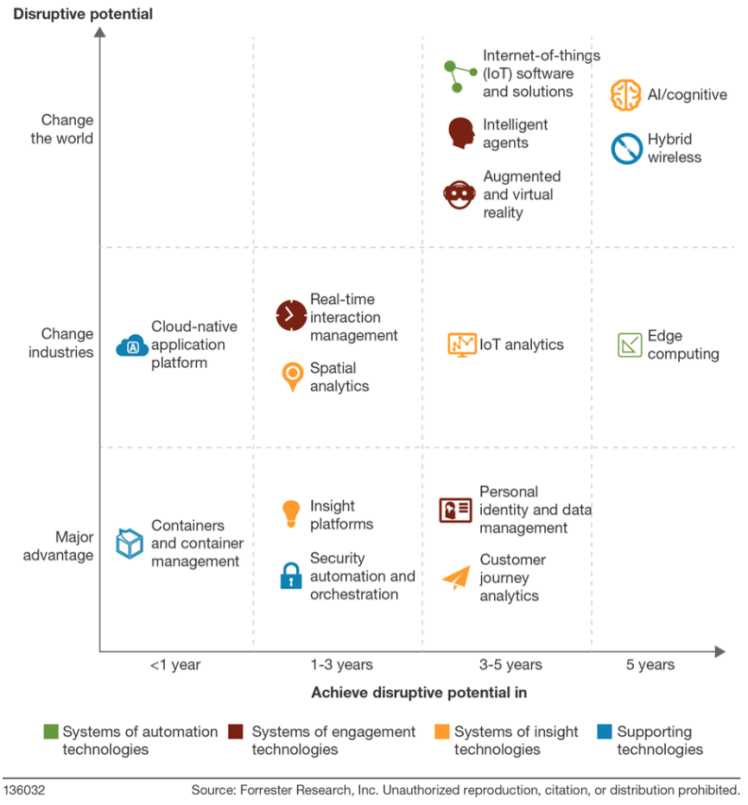As a part of a research on future global trends that will cover a series of articles, here I looked at global impacts and implications of the developments in Artificial Intelligence and Automatization.
A decade ago robots still seemed pretty limited…

ASIMO, December 2006
Now, not so much… They don’t just win chess anymore, they can win Jeopardy and they can win GO!
Starting with the vacuum cleaners where the technology advanced the most out of household technologies, Artificial Intelligence (AI) has come to change the way we live. From cooking to housekeeping, from social sets to personal drones we live in a world that would have been deemed science fiction a few decades ago.
AI is now poised to drastically change the way we work as well. From guided sales to predictive service, to automated marketing, every business user can use AI to be more productive and provide smarter, more compelling customer experiences.
The market for AI technologies is flourishing. Beyond the hype and the heightened media attention, the numerous startups and the internet giants racing to acquire them, there is a significant increase in investment and adoption by enterprises. A Narrative Science survey found last year that 38% of enterprises are already using AI, growing to 62% by 2018.
Artificial Intelligence includes a variety of technologies and tools, some time-tested, others relatively new. To help make sense of what’s hot and what’s not, Forrester published a TechRadar report on Artificial Intelligence, a detailed analysis of 13 technologies enterprises should consider adopting to support human decision-making.
 Investors across all industries pouring a large amount of investments to AI. Most of the investments in 2016 came from Tech Giants and corporations. Forrester Research predicted a greater than 300% increase in investment in artificial intelligence in 2017 compared with 2016. IDC estimated that the AI market will grow to more than $47 billion in 2020.
Investors across all industries pouring a large amount of investments to AI. Most of the investments in 2016 came from Tech Giants and corporations. Forrester Research predicted a greater than 300% increase in investment in artificial intelligence in 2017 compared with 2016. IDC estimated that the AI market will grow to more than $47 billion in 2020.
Today, while AI is most commonly cited for image recognition, natural language processing, and voice recognition, this is just the very beginning of what is thought of as learning. We are progressing down a path from going from a toddler to a slightly more capable learning machine. There are an infinite amount of applications AI can be applied to. With the explosion of platforms and sensors, AI is now more important than ever. Developers have started commercializing their ideas across retail, health, banking, sports and more.
Digital disruption is the flip side of digital opportunity. Established companies and startups alike enlist new technologies in the fight to dislodge incumbents, protect entrenched positions, or re-invent entire industries and business activities.
Developments in many aspects of the technology will shape the future. One example of such disruptive technology shift is the Internet of Things (IoT), which provides companies with ongoing insights into what’s going on with their products, operations, and customers. Another example would be augmented and virtual reality where AR overlays digital information and experiences on the physical world while VR creates a new interactive digital environment. Yet another major disruption could potentially arise from AI and cognitive technology applications, using advanced machine learning to discover insights in data and suggest actions. Potential commercial applications of these technologies are enormous and, with the increasing investments from yield-hungry investors, the achievement of the disruptive potential for these technologies is not far off.
 Over the next fifteen years, the Study Panel expects an increasing focus on developing systems that are human-aware, meaning that they specifically model, and are specifically designed for, the characteristics of the people with whom they are meant to interact. In the coming years, new perception/object recognition capabilities and robotic platforms that are human-safe will grow, as will data-driven products and their markets.
Over the next fifteen years, the Study Panel expects an increasing focus on developing systems that are human-aware, meaning that they specifically model, and are specifically designed for, the characteristics of the people with whom they are meant to interact. In the coming years, new perception/object recognition capabilities and robotic platforms that are human-safe will grow, as will data-driven products and their markets.
With every new technology, there are challenges to overcome that impede the growth of those technologies. To be able to move forward, AI and related technologies need to overcome policy and legal issues, including; privacy, innovation policy, civil and criminal liability, agency of person or corporation, certification, labor, taxation, and politics. Prevailing through some of these challenges will be especially hard, but once there these technologies will alter completely the way we live, work and even think.


